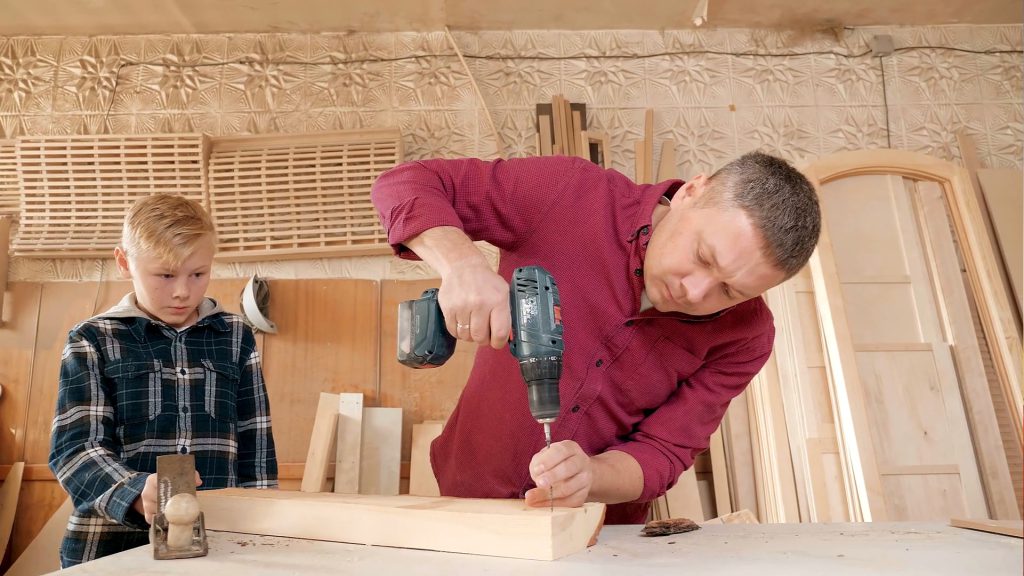
Disclaimer: I am not a financial advisor and this page exists to aid you in your research, but not make or suggest decisions for you. Further research is recommended for you to draw a conclusion of your own. Additionally some links contained on this page may be affiliate links in which Dynastus will receive a portion of sales at no additional expense to you.
Generational wealth is the concept of handing culture, knowledge, social connections and financial capital down to future generations of your family. It’s not just about ‘having plenty of money’, as many in the public sphere are led to believe.
‘Family money’ was typically passed from father to son through their trade skill or on how to tend the fields or how to hunt and so on. It was more about granting the capacity to provide, rather than simply handing over a lump sum of fiat currency, investments or tangible assets.
Part of this generational wealth transfer was the transmission of family culture, values, morals and principles. Then there was the handing over of education, knowledge, and secrets(no, not the dark kind, more like trade/skill secrets – think grandmas cookies). And finally, there was a social transfer, the family name and reputation, the friends and social connections a family had. These three categories were where the primary wealth lay for a family. And this is still true today.
The Industrial Revolution
While the industrial age led to the ability to create a great abundance, a lot was lost in the process. The idea of community gradually became disjointed. We became more connected but further apart.
Family culture and heritage was largely diluted, traditional values became frowned upon in favor of nihilism and selfish hedonism, intellectual capital transfer was outsourced to government-run indoctrination camps school systems and social capital was broken apart to be more reliant on individuals than a family name/heritage(for most people).
More than the desecration of these core types of capital for families, the industrial machine created schools to train folks to feed ‘the beast’. And in exchange, the beast devoured the commonplace tradition of family or friends of the family training children in their trade or business. Instead, children went on to become factory workers, or fill a plethora of new jobs and career paths that opened up thanks to all of the new industries created.
And these industries had a profoundly positive impact on the abundance that was able to be accumulated in society. But it came with the cost of the tradition of passing financial wealth down to family members and so too did the concept family money.
The Modern Revolution
Nowadays, ‘family money’ conjures thoughts of billionaire families, like the Buffets, Rockefellers, Waltons, Gettys and so on. But the fortunes they have built, and the public nature of their businesses lead people to believe generational wealth is reserved for the ultra wealthy.
But for the majority of history, this simply has not been the case.
In reality generational wealth is relative.
You can indeed extrapolate the traditional values of the old days and apply them to modern-day through a variety of methods. Now that an abundance can be accumulated with more ease than any other time in history thanks to the advent of industry, the traditional method of wealth transfer needs to be altered to match today’s standards.
Instead of only being able to transfer the capacity to earn, we can now transfer our abundance to future generations by relying on the 3 primary types of capital: Human, Intellectual and Social capital to prevent
Without these three things, your family is doomed to suffer from the Scottish proverb, the father builds, his son buys, his son sells and his son begs.
To learn all about the different forms of capital for a generational wealth family, you can start reading up on the subject by clicking the relevant link above.
Back to the Money
Back to the money side of things, once you have a firm understanding of the 3 most important types of capital, human, intellectual and social, and where they fit in the generational wealth model, the question of financial capital can be addressed.
Most of the money in the world is controlled by families. From the biggest brand names to a lot of the real estate across the globe, families (oftentimes several generations in) are managing capital that has been in their stewardship for some time. And most of these families are secretive and prefer to remain anonymous, which by all means is their right.
Aspirations
Even if your aspiration isn’t to necessarily to achieve this level of wealth, the opportunities and doors you can unlock by taking a generational wealth approach will create a springboard for your family to launch from, for an indefinite period of time. Well, barring some Marxist takeover, which generational wealth has the power to prevent…but I digress.
Examples to think of, are the family farms that have been in the family for 4 generations. Or ‘Uncle Jimmy’s’ chain of laundromats, the stock portfolio a grandfather hands to his grand-kids, the social connections a father makes at his bowls club leading to a client base for his sons contracting business. These and so much more are forms of generational wealth. And they mean that the individual’s in the family, don’t necessarily have to start from scratch at the beginning of their adult lives.

Averse
A lot of people are averse to generational wealth as the term and concept conjure up images of trust fund children and spoiled brats, and maybe this is just what society wants you to think.
We don’t see the majority of dynasties, because a) they don’t call themselves that outwardly, and b) they don’t make themselves public figures. In reality, families that successfully transfer family money and/or build a dynasty are thrifty, cunning, have strong familial bonds and above all else are supportive.
But supportive doesn’t mean loose purse strings. On the contrary actually, family money is seldom(see: never) used to fund lifestyle choices.
Instead, family money is used to improve the lives, not the lifestyles of the family members. It is nurtured, invested and grown, but the principle is never drawn down, and it is never used for lavish purposes outside of reason.
Utility
The utility of family money is endless, from building a real estate empire, to funding long term restorative projects, to creating a portfolio of interconnected operating businesses. The possibilities are endless.
Depending on your methodology and philosophy, one concept I like is using family money to buy family members houses which they rent from the family money pool. You could also fund higher education and entrepreneurial ventures for family members, the family bank gaining a stake or lending the money at a low interest rate in exchange for it’s help.
But utility is a subject for another video/post, and another series.
In this series, I want to talk about how you actually go about building this financial capital, as a family.
The Methods
From my observations thus far, there are three core methods, each deserving of their own post. You can click on the relevant links below to jump into the dedicated post on each method.
For now, I’ll briefly touch on each, and deliver a full-length post breaking them down in detail. That way you can learn more about the ones that are of most interest to you.
All three of these implement elements of the three other types of capital that aren’t financial but for the sake of argument, each one is a little heavier on one than the other.
The Great Accumulator

One man, many money.
‘The Great Accumulator‘ is the most documented approach to creating family money. This is due to the rather front-facing business the family wealth is built upon.
It appears from the outside that this is the method that most old money families have used to procure wealth. It’s difficult to determine whether this is actually true as the other two methods are far less dependent on such prominence in society. I do personally believe, anecdotally, that this is actually the least common method to building generational wealth for your dynasty. The other two methods are far more common and accessible for most families. This will be apparent as you read through the respective post for each.
What I can say, however, is that this is the method used to build significant wealth in the shortest time frame(a single generation).
Along with this comes the greatest risk and difficulty too. Remember that families outlive the lifespan of any of the individuals’ in the family. Don’t be put off if this method isn’t the right fit for you and yours. As I said, I personally believe the other two methods are far, far more common, but less documented – and the wealth isn’t as significant, but still relatively substantial and relevant.
How it Works
For the Great Accumulator, essentially one family member, most frequently, the patriarch creates a significant amount of wealth, then foregoes it and ‘puts it in the middle’ so to speak.
How they do this is usually from building an asset or a portfolio of assets of significant value. How this is achieved varies from family to family. The assets can go through a liquidation event to some effect. Or the assets can be put under management with the excess cash flow used to fuel the creation of generational wealth.
The result is a business that has the ownership of one or more assets that act as the family business, typically managed by a single family office.
Along with this business approach, oftentimes social ties are handed down to some effect as well. Whether these are in country clubs, fraternities in colleges, business partners or access to capital. These social connections are where the real wealth-building lies for future generations.
This method is very heavy on the social side of the capital spectrum and suits driven extroverts in the founding father/patriarchal role(or occasionally/additionally the founding mother/matriarchal role), though this isn’t a strict necessity, just a suggestion.
This method creates the most wealth in the shortest period of time, but is also subject to greater weaknesses int he family as well. If this method applies to you, it is imperative you pay extra attention to human capital. Moving forward you want your family to be in a perpetual state of creation. Otherwise, just like in thermodynamics, your family will move from creation, to stagnation to entropy and disband. Just like the proverb clogs to clogs implies.
The Collective Method

This is sort of a sensible, structured money-in-the-middle approach.
‘The Collective Method‘ is another path to create family money that is most accessible to the majority of families.
Essentially it is pooling some of the collective resources of your family and then using them to alleviate some of the burdens of the first and second generations of your family. Collective capitalism, in a single term. This allows for more capital to be freed up, to build the pool further for more generations to come. In turn, this creates family money that becomes self-sustaining.
This may mean collective family asset purchases, pooling time and skill together for entrepreneurial pursuits or multi-generational living arrangements to reduce expenses and increase free time.
This method is all about sacrifice and leans more on human capital as its primary resource. This is the method that will suit most families. Especially those not driven to build a massive business.
Take note that this is still ‘building a business’, just with more hands. It might me the ownership of real estate or a portfolio of stocks, or running a small enterprise or even just property ownership for the first time in several generations. Keep in mind that generational wealth is relative.
As a quick example:
A family could collectively purchase a rundown four-plex housing arrangement, the founding parents living in one and each of their children living in another, all pitching in to fix it up. They all then rent each of these units from the family collective at a discounted rate, which allows for a greater quality of life, while still capturing capital into the family collective to be nurtured further.
The added value to this asset allows for leverage, plus the rental income in brings in gets plowed back into the collective, maybe along with an agreed-upon, fixed amount paid from each of the parties. This collective then uses these cumulative funds to purchase rather liquid investments, say REITs, which are a personal favorite passive income asset of mine.
These liquid investments may later be liquidated to purchase more real estate to help alleviate housing costs of the family in the future, or perhaps to start family businesses or something else that aligns with the families common goal.
It’s easy to see how this method allows for low-income/almost average families to really get ahead quickly, but also is heavily hinged on human capital. Without strong family bonds, this can all fall apart in a hurry.
The Family Business

Finally, there is ‘The Family Business‘, I have left this to last as this name may be a bit misleading. There are actually two approaches inside this method, but they fall under the same category.
This method is heavily lenient on intellectual capital and the effective transmission of it between generations. In doing so, your family provides a means to create personal wealth, which can then be invested into the development of the family and a dynasty.
This transmission of intellectual capital can mean handing over a business and teaching the proceeding generation how to operate it, as the name suggests.
But it can also mean the transfer of a wealth-creating skill set, such as teaching your son a trade (as was done in ‘ye olden‘ times). Or educating your daughter in investing and personal finance.
This is the basis of the commonplace tradition that was normal over a century ago, prior to the industrial revolution. Those families with ‘family money’ taught their descendants in their trade, as a means of handing over wealth, not in a monetary form, but in capability.
Such as fathers teaching sons to be plumbers, or carpenters, bakers or candlestick makers
One that learns how to fish can eat for a lifetime. Teaching your children how to fish and then encouraging them to teach their children will feed generations. If you simply give fish away, your descendants will learn nothing.
There’s one satellite approach here, and that is in former generations leveraging their social capital to afford their children opportunities.
I’ll touch on this and go into more detail on the rest in the respective post for the family business model.
Family Money
So I hope you enjoyed this introduction to the three core methods of building family money. Remember that money isn’t the most important thing in generational wealth, but having a plan for how to build it will certainly help.
Out of all of these, there is surely one that will fit your family requirements to build a family empire.
Enjoy the journey.
Yours,






